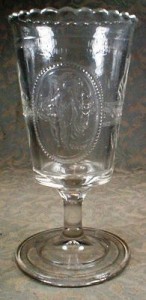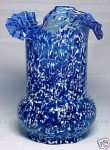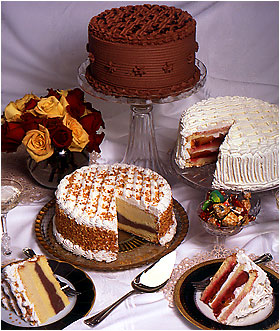
Ingredients
- 3 1/2 pounds russet potatoes
- 2 tablespoons kosher salt
- 16 fluid ounces (2 cups) half-and-half
- 6 cloves garlic, crushed
- 6 ounces grated Parmesan
Directions
Peel and dice potatoes, making sure all are relatively the same size. Place in a large saucepan, add the salt, and cover with water. Bring to a boil over medium-high heat and then reduce heat to maintain a rolling boil. Cook until potatoes fall apart when poked with a fork.
Heat the half-and-half and the garlic in a medium saucepan over medium heat until simmering. Remove from heat and set aside.
Remove the potatoes from the heat and drain off the water. Mash and add the garlic-cream mixture and Parmesan; stir to combine. Let stand for 5 minutes so that mixture thickens and then serve.
The type of potato - High starch or low starch
Potatoes are basically water and starch. High starch potatoes like russet and Yukon Gold are often used because the more starch, the fuller the actual cells of the potato resulting in a fluffier texture. Some say they tend to be creamier than other potatoes.
Low starch potatoes like round whites are more waxy and some chefs say better for mashed spuds because they absorb less water and hold up better when cooking. They also think they have more flavor and less "starchy" taste.
How you cook the potatoes
Without going into the science of it, always start your potatoes in cold water with salt added to it. How much water? Just enough to cover the potatoes. Bring the water to a boil and cook the potatoes until they are tender when pierced with a knife. How long it takes depends on how many potatoes you are cooking.
When done, drain them immediately! Do not rinse, just drain and put them back in the pot and return the pot to the stove on low heat. This will make a huge difference because the low heat will allow some of the excess water to evaporate leaving you with less water and more potato resulting in more flavor.
How to mash the potatoes
How you mash your potatoes will greatly effect the texture and style. There are several tools and methods all having different results. For example, the most common masher in America is the Wire Masher. With it you can create either a smooth or textured mashed potato depending on how much you work.
If you are looking for really smooth mashed potatoes (the way I like them) you can try a Potato Ricer. Looks just like a giant garlic press and "rices" the potatoes that you then combine with your other ingredients for extremely smooth potatoes.
If you are looking for fluffy, airy potatoes, try an electric mixer. Often used in restaurants to stretch how far a potato can go, the mixer whips air into the potato giving them more volume and staying power.
What to add
As important as type of potato, how you cook them them & finally mashing technique is what you add to them. Makes sense if you add cream over milk the end result should be creamier flavor. Instead of butter, some chefs have told me they use olive oil or duck fat.
Then there are the fun extras given to me by visitors to my web site with some mentioned below. I'm talking about cream cheese, Worcestershire sauce, hot English mustard, turnips, parsnips and whatever else you may find in your family's secret mashed potato recipe.
Sour Cream Mashed Potatoes
Ingredients
- 3 pounds boiling potatoes, peeled
- Kosher salt
- 1 1/2 cups milk
- 6 tablespoons unsalted butter
- 1/2 cup sour cream
- 1/2 teaspoon freshly ground black pepper
Directions
Cut the potatoes into 1-inch cubes and place them in a large pot. Cover the potatoes with cold water and add enough salt so the water tastes quite salty. Bring to a boil, then lower the heat and simmer, uncovered, for about 10 to 12 minutes, until the potatoes fall apart easily when pierced with a fork.
Meanwhile, heat the milk and butter in a small saucepan, making sure it doesn't boil. Set aside until the potatoes are done.
As soon as the potatoes are tender, drain them in a colander. Place a food mill fitted with a small disc/blade over a glass bowl. Process the potatoes through the food mill, turning the handle back and forth to force the potatoes through the disc. As soon as the potatoes are mashed, slowly whisk in enough of the hot milk/butter mixture to make the potatoes very creamy. Add 2 teaspoons of salt and the sour cream and pepper and whisk to combine. Taste for seasoning and serve hot.




















































































